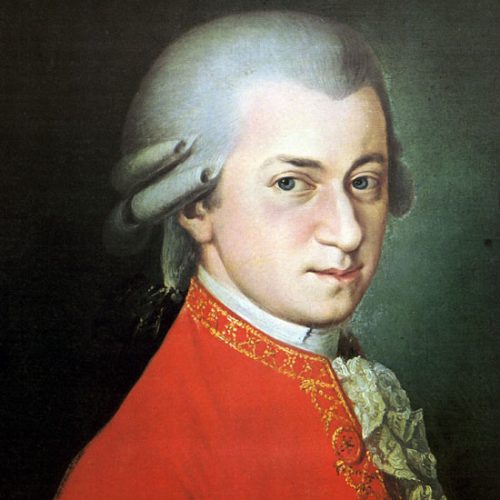The Magic Flute
All the rage in Vienna in 1791 were entertainments based on “Oriental” tales of magic and mystery that included plenty of brilliant spectacle and lively amusements. The Magic Flute was written to delight the Viennese of that era.
The young hero Tamino enters the scene pursued by a great serpent. As he cries out for aid from the gods, he falls exhausted on a rock. Three mysterious ladies appear and slay the serpent. After a spirited discussion of the youth’s attractions, they leave to inform their Queen of his arrival. Upon awakening, Tamino sees the dead serpent and is approached by Papageno — the merry bird-catcher. Tamino assumes his rescue was at the hands of Papageno, despite the odd appearance of the bird-man. Papageno is willing to take the hero’s credit but is ultimately punished for his lies when the Ladies return. Tamino is offered a portrait of the Queen’s daughter, Pamina, which he serenades with tenderness and appreciation of her beauty. The Ladies share the awful situation that Pamina has been kidnapped by an evil Magician and is held hostage. The Queen of the Night appears and implores Tamino to rescue her beloved daughter, promising her in marriage if he is victorious. Our hero, now equipped with two magical musical instruments sets off with Papageno as his odd companion to rescue the maiden.
In the palace of the magician Sarastro, where Pamina is being held, Papago strays in, sent ahead by Tamino, and his bizarre appearance frightens Monostatos, who is guarding the girl. Mutually terrified, both Papageno and Monostatos consider each other a devil and flee. Ultimately, the princess comes to believe that her mother has sent a prince to rescue her and that he’s fallen in love with her. In a tender moment, Papageno tells of his own yearning for love and the scene ends with their duet about the joys of love.
In his quest for Pamina, Tamino is led by three Genii to the site of three temples. There he encounters a wise man who tells him that the true motives of the magician Sarastro are in service of wisdom and enlightenment, far beyond the understanding of the Queen. It’s revealed that Pamina’s mother, the Queen of the Night, seeks to destroy knowledge and wisdom in the darkness of her need for power. Hearing that Pamina is safe, Tamino plays a tune of gratitude on his magic flute, which charms even the wild animals. Meanwhile, Pagageno and Pamina enchant their way out of danger with the music of magic bells. Suddenly, Sarastro arrives and the terrified Pamina and Tamino are brought to him. He enlists the three into a quest to subvert the evil domination of the Queen and the lovers are veiled and sent on separate quests. Tamino is led to the Temple of Probation while Pamina is taken to the Temple of Wisdom.
Tamino is presented with tasks and rules meant to lead him to his higher self. Despite distractions and temptations, the prince proves himself worthy. In contrast to the exalted hero’s journey of Tamino, the other characters are presented with a wild variety of situations. Monostatos tries to steal a kiss from Pamina but she fights for her virtue. She is pushed to value power over love by her mother Queen of the Night, but fights despair by her strength and love for Tamino. Papageno, a truly naïve son of nature, wants to be loyal and brave but his foolishness cannot rise above his own fears and honest enjoyment of the simple pleasures of life, food, drink, and love. His wishes are granted when the magic of his music rewards him with his perfect counterpart, Papagena, and their own delightful love nest.
The Queen of the Night is, in fact, trying to destroy the brotherhood of the seekers of wisdom. After the Sarastro and the Priests successfully guide Tamino and Pamina through the ultimate quest to free them from the fear of death, the evil forces of the Queen, her ladies, and Monostatos try to attack the temple. The opera ends with Sarastro, Tamina, Pamini, the Genii, Priests, and others shattering their treachery through the power of courage, fidelity, and virtue.






























